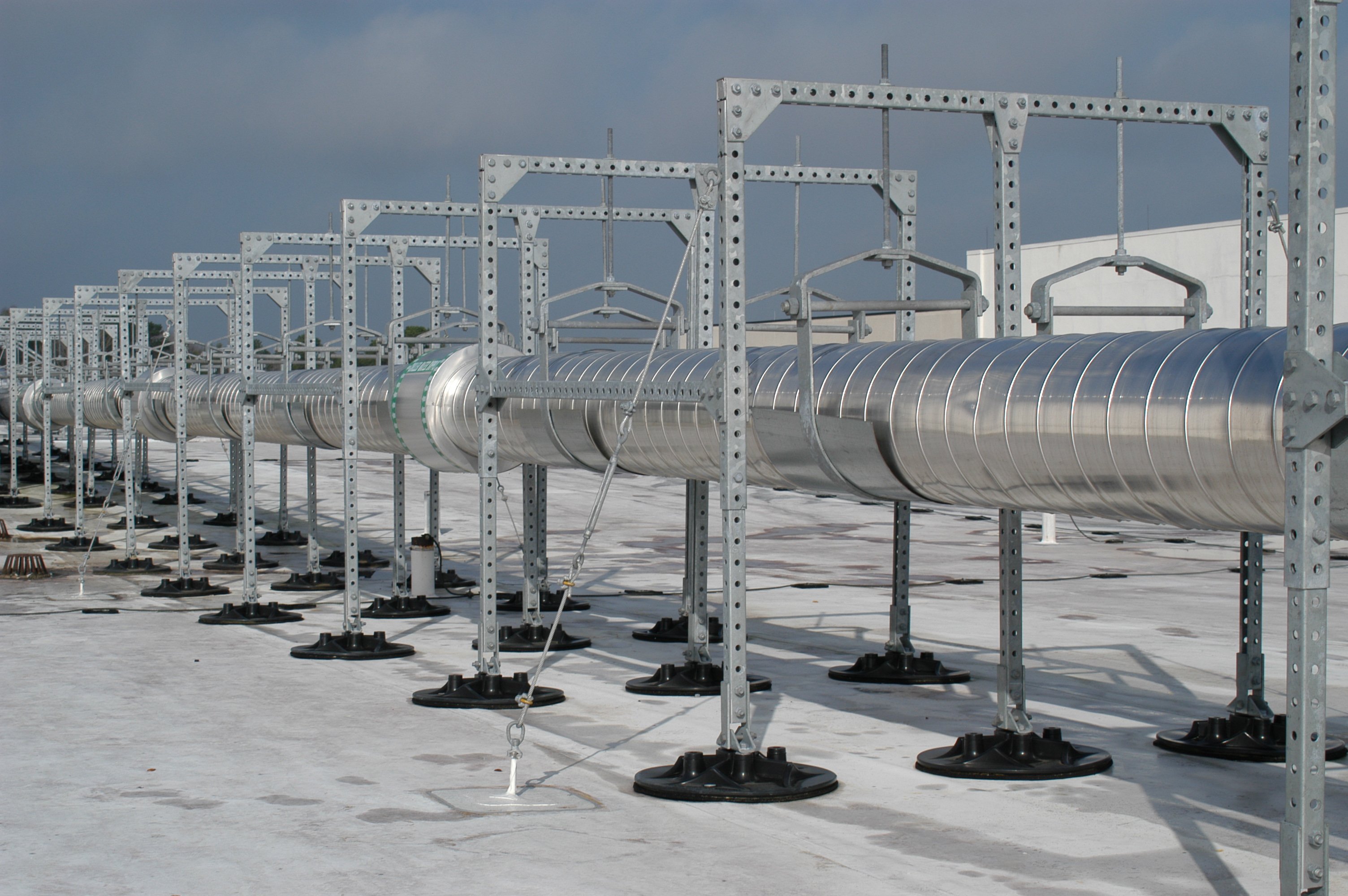 If you live in a part of the world that is susceptible to earthquakes, it is absolutely imperative that you take steps to insure that the roof pipe supports are up to the challenge. While it’s always a good idea to work with an experienced pipe support design professional when mapping out any new (or retrofitted) rooftop support system, this is especially important when the building is located in an area with frequent seismic activity.
If you live in a part of the world that is susceptible to earthquakes, it is absolutely imperative that you take steps to insure that the roof pipe supports are up to the challenge. While it’s always a good idea to work with an experienced pipe support design professional when mapping out any new (or retrofitted) rooftop support system, this is especially important when the building is located in an area with frequent seismic activity.
Additionally, owners and facility managers should insist on only using plans, products, and materials that have been thoroughly reviewed, tested, and stamped by a Professional Engineer (PE), not only to ensure that the equipment can handle seismic activity, but also to reduce potential liability should an event take place.
1. FEMA
According to FEMA, the strength of a seismic event is often far greater at rooftop levels than it is on the ground. Because of this, building principles should refer to regional experts who are most familiar with any nuances associated with the specific building codes in your area.
A properly designed rooftop support system not only helps protect the piping, ductwork, conduit, and other equipment located on the roof, these support systems also help protect the area below the roof as well. When a rooftop piping system fails, the contents within the pipe can leak onto the roof membrane and even penetrate into the workspace below, causing damage to the entire building.
FEMA has created several fully illustrated guidebooks for choosing and installing seismic restraint systems for duct and roof pipe supports. Another great source of information on the subject is ASHRAE’s Practical Guide to Seismic Restraint. These resources provide excellent guidelines for building owners and equipment installers to familiarize themselves with basic roofing and pipe support design concepts and best practices for selecting, sizing, and installing rooftop equipment.
2. A Combination of Strength and Flexibility
The best protection comes from taking a step-by-step approach when matching the support with the piece of equipment or component it is designed for. Designing roof pipe supports is not a one-size-fits-all type of project. The rigidity and functionality of the support should match with the type (and size) of the material it will come in contact with – both in normal “ideal” conditions as well as a “worst case scenario” extreme weather event or seismic event.
3. Pay Attention to Load Ratings
Not only is it important to match the right type of support with the application, it’s also important to select the right size as well. In addition to the physical or visible size of the support, there may also be differences in its material design that make it stronger or weaker than it may look.
A narrow, flexible pipe clamp would not be appropriate for use with a large diameter steel pipe. In addition to size, supports should also complement the characteristics of the type of pipe, conduit or ductwork it is being installed with. Supports should not only distribute weight uniformly, they also need to protect the roof membrane from tears caused by the back and forth motion of vent pipes as they expand and contract.
For instance, piping and ductwork that is designed to be flexible or shift during changes in temperature, humidity, or building movement should not be connected with a rigid support. This could cause a “hot spot” where forces are working against each other and inadvertently create a dangerous point of failure in the system.
4. A Tough Job in a Harsh Environment
Weatherization of rooftop piping supports should also be a regular part of the building maintenance. A support that has shifted, cracked, or corroded due to the harsh weather conditions on a roof is more likely to fail during a seismic event.
Support hardware should be selected to withstand these conditions, but that does not mean that they should be ignored after installation. Routine rooftop inspections should be conducted regularly with building maintenance personnel who have been properly trained to identify warning signs of support damage or deterioration.
5. Combine Federal, Regional, and Local Expertise
Finally, although information from FEMA, ASRAE, and other organizations can be helpful in providing basic guidelines to follow, it is not a substitute for calling on local or regional planning, design, and installation expertise.
One important first step is to work with an experienced, certified design professional, such as a Professional Engineer (PE). Partnering with a local PE on your roof pipe supports project is one of the best ways to insure that not only will the system be code compliant; it will be designed with enough resiliency to handle whatever Mother Nature decides to throw at it - in your neck of the woods.





